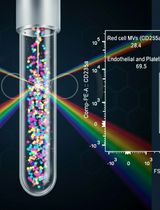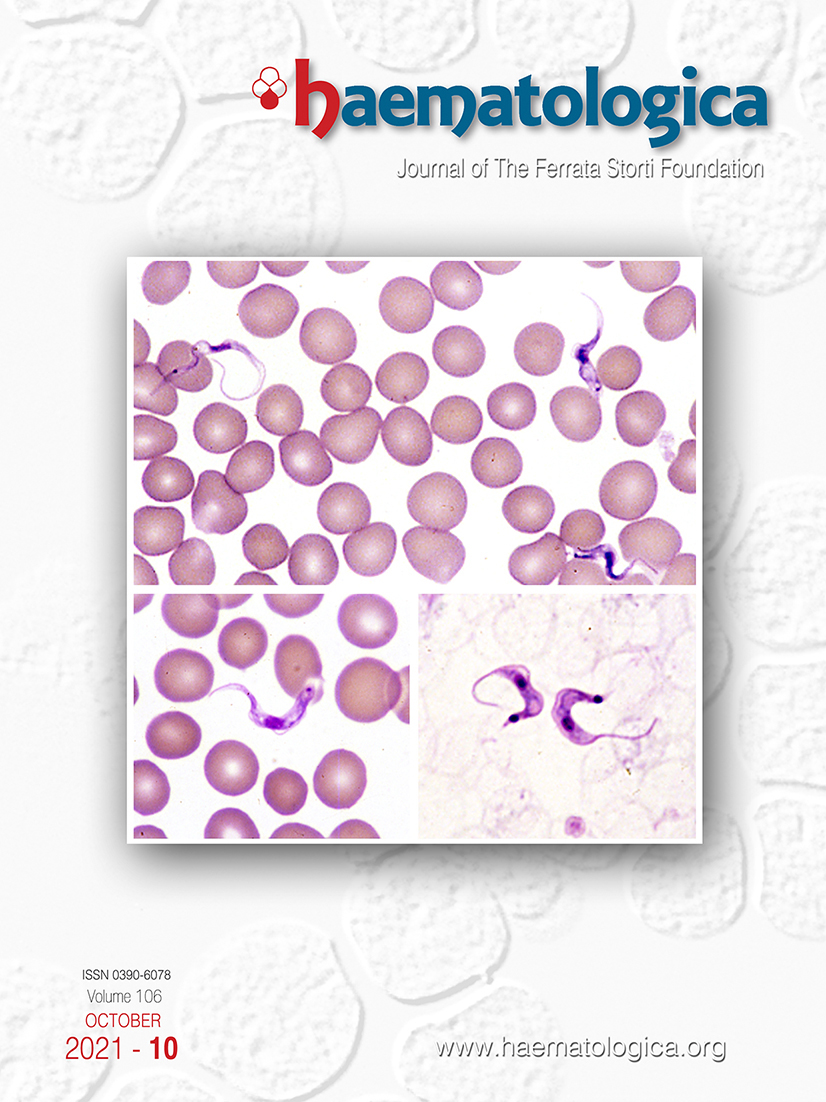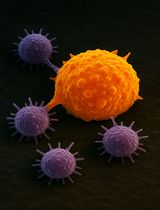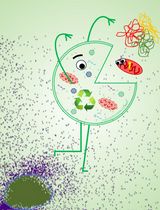- EN - English
- CN - 中文
Small Molecule Screening of Primary Human Acute Myeloid Leukemia Using Co-culture and Multiplexed FACS Analysis
使用共培养和多重 FACS 分析对原发性人类急性髓细胞白血病进行小分子筛选
发布: 2022年03月20日第12卷第6期 DOI: 10.21769/BioProtoc.4353 浏览次数: 2971
评审: Alak MannaAnonymous reviewer(s)

相关实验方案

外周血中细胞外囊泡的分离与分析方法:红细胞、内皮细胞及血小板来源的细胞外囊泡
Bhawani Yasassri Alvitigala [...] Lallindra Viranjan Gooneratne
2025年11月05日 1333 阅读
Abstract
Ex vivo culture of primary acute myeloid leukemia (AML) cells is notoriously difficult due to spontaneous differentiation and cell death, which hinders mechanistic and translational studies. To overcome this bottleneck, we have implemented a co-culture system, where the OP9-M2 stromal cells support the growth, but most notably limit the differentiation of primary AML cells, thus allowing for mechanistic studies in vitro. Additionally, the co-culture on OP9-M2 stromal is superior in preserving surface marker expression of primary (adult and pediatric) AML cells in comparison to stroma-free culture. Thus, by combining the co-culture with multicolor, high-throughput FACS, we can evaluate the effect of hundreds of small molecules on multi-parametric processes including: cell survival, stemness (leukemic stem cells), and myeloid differentiation on the primary AML cells at a single-cell level. This method streamlines the identification of potential therapeutic agents, but also facilitates combinatorial screening aiming, for instance, at dissecting the regulatory pathways in a patient-specific manner.
Graphic abstract:

Schematic representation of the ex vivo small molecule screening of primary human acute myeloid leukemia. Irradiated, sub-confluent OP9-M2 stromal cells are plated in half-area 96 wells plates 4–16 h prior to adding primary AML cells. Compounds are added 36–48 h later and effects on cell number, leukemic stem cell population, and myeloid differentiation are quantifed by FACS after 4 days of treatment.
Background
Acute myeloid leukemia (AML) is a malignant hemopathy, characterized by the accumulation of immature myeloid cells with unrestrained self-renewal and a blocked differentiation (Saultz and Garzon, 2016). The standard-of-care conventional chemotherapy initially promotes remission in the majority of patients, but a substantial fraction will experience relapse, since the therapy fails to eradicate the leukemic stem cells (LSC), a population that is believed to drive the disease (Reya et al., 2001).
Recently, alternative therapies have been developed that target disease-specific molecular events (Kalmanti et al., 2015, Lim et al., 2017), with the promise of increased specificity and thus being superior to chemotherapy. However, these targeted therapies have only met moderate clinical success due to the development of drug resistance and disease relapse, partially by the expansion of malignant clone(s) that do not rely on the targeted mutation (Kasi et al., 2016). The complexity of genetic, epigenetic, and cellular heterogeneity in AML (Cancer Genome Atlas Research et al., 2013) further indicates that single-agent targeted therapy would not be sufficient for leukemia clearance, highlighting the need for combinatorial therapeutic strategies.
A general problem in developing therapies for AML is the lack of robust preclinical models (Estey et al., 2015). The gold standard to evaluate leukemic function is patient-derived xenograft models that are time- and resource-consuming, and thus incompatible with high-throughput strategies. On the other hand, the culture of primary AML samples leads to spontaneous cell death, differentiation, and immunophenotypic changes unrelated to functional output. Strategies targeting specific pathways, such as AhR signaling, using small molecules have greatly improved the culture of AML cells (Pabst et al., 2014), but with unspecific changes of surface markers.
To overcome these hurdles, we took advantage of a co-culture system where OP9-M2 stromal cells were reported to support the fitness of healthy human hematopoietic stem cells (HSC) (Magnusson et al., 2013). It is thought that LSC (like HSC) receive survival signals from the supporting cells in the bone marrow niche (Meads et al., 2008)—which can be mimicked in this artificial bone marrow niche co-culture platform. In line, our findings show that primary LSC can be preserved in our co-culture system in comparison to stroma-free culture. In fact, as stem cells can be preserved for weeks, the implementation of this protocol allowed for molecular studies and interventions on human primary hematopoietic cells, that resulted in multiple novel discoveries (Magnusson et al., 2013; Baudet et al., 2016; Prashad et al., 2015; Komorowska et al., 2017; Calvanese et al., 2019).
Finally, this system can be scaled up to a small molecule multiplex screening platform, in combination with flow cytometry (96-well plates recommended) on primary patient (adult and pediatric) AML cells, that can assess the effect of each molecule on multiparametric processes, including proliferation, stemness, and cell differentiation. In this way, our protocol can be used to reveal pathways driving AML (mechanisms), and to identify novel compounds (drug discovery), as well as for drug repurposing, and delineation of combination therapies in a patient-specific manner (Hultmark et al., 2021).
Materials and Reagents
500 mL vacuum filters, 0.22 μm PES (TPP, catalog number: 99500)
Non sterile, 96 round-bottom wells polystyrene plates (ThermoFisher Scientific, catalog number: 268152)
UltraComp eBeadsTM Compensation Beads (ThermoFisher Scientific, catalog number: 01-2222-42)
Tissue culture plates
100 mm tissue culture plates (Corning, catalog number: 430167)
150 mm tissue culture plates (Corning, catalog number: 430599)
15 mL centrifuge tubes (Sarstedt, catalog number: 62.547.205)
50 mL centrifuge tubes (Sarstedt, catalog number: 62.547.205)
2 mL sterile serological pipettes
Sterile 40 µm cell strainers (Corning, catalog number: 431750)
Sterile 50 mL reagent reservoirs (Corning, catalog number:4870)
10 mL reagent reservoirs (Vistalab Technologies, catalog number: 30541012)
Sterile 96-well half area cell culture plates with lids (VWR, catalog number: 392-0060)
Non sterile U/V-bottom 96 wells plate
Polypropylene round-bottom FACS tubes (Falcon, catalog number: 352063)
7-Aminoactinomycin D (Merck, catalog number: A9400-5MG)
Cytarabine 10 mM in DMSO (Selleckchem, catalog number: U-19920A)
Dimethyl sulfoxide (DMSO) (Sigma-Aldrich, catalog number: D8418)
Trypan blue (Sigma, catalog number: T8154)
HyClone Phosphate Buffered Saline solution (PBS) (GE Healthcare, catalog number: SH30256.01)
OP9-M2 stromal cell line (Magnusson et al., 2013) or OP9 retrieved from Vendor (ATCC)
IgG from human serum (Merck, catalog number: I4506)
RPMI 1640 medium without L-glutamine (GE Healthcare, catalog number: SH30096.01)
EDTA (0.5 M), pH 8.0, RNase-free (Thermo Fisher Scientific, catalog number: AM9260G)
Trypsin-EDTA (0.25%), phenol red (ThermoFisher Scientific, catalog number: 25200-056)
HyClone Bovine Calf Serum (BCS), US Origin, 500 mL (GE Healthcare, catalog number: SH30073.03)
10% Bovine Serum Albumin in Iscove’s MDM (BSA) (Stem Cell Technologies, catalog number: 09300)
Fetal Bovine Serum, tested (ThermoFisher, catalog number: A4766801)
HyClone Penicillin/Streptomycin/Glutamine solution (Cytiva, catalog number: SV30082.01)
Hyclone MEM/Alpha modification without L-glutamine, ribo- and deoxyribonucleosides (GE Healthcare, catalog number: SH30568.FS)
Recombinant human Stem cell factor (SCF) 20 ng/μL (Peprotech, catalog number: 300-07)
Recombinant human Thrombopoietin (TPO) 20 ng/μL (Peprotech, catalog number: 300-18)
Recombinant human Flt3-ligand (FL) 20 ng/μL (Peprotech, catalog number: 300-19)
Recombinant human Interleukin-3 (IL3) 20 ng/μL (Peprotech, catalog number: 200-03)
Recombinant human Interleukin-6 (IL6) 20 ng/μL (Peprotech, catalog number: 200-06)
APC/Cyanine7 anti-human CD34 antibody (Biolegend, catalog number: 343514)
APC anti-human CD38 antibody (Biolegend, catalog number: 303510)
PE/Cyanine7 anti-human GPR56 antibody (Biolegend, catalog number: 358206)
PE anti-human CD123 antibody (Biolegend, catalog number: 306006)
Brilliant Violet 421TM anti-human CD11b antibody (Biolegend, catalog number: 301324)
Brilliant Violet 605TM anti-human CD15 (SSEA-1) antibody (Biolegend, catalog number: 323032)
FITC anti-human CD14 antibody (Biolegend, catalog number: 367116)
APC anti-human CD64 antibody (Biolegend, catalog number: 305014)
APC/Cyanine7 anti-human HLA-DR antibody (Biolegend, catalog number: 307618)
IgG1, Kappa from murine myeloma (Merck, catalog number: M7894)
PE/Cyanine7 anti-human CD117 (c-kit) Antibody (Biolegend, catalog number: 313212)
Wash solution (see Recipes)
Freezing medium (see Recipes)
Thawing medium (see Recipes)
OP9-M2 culture medium (see Recipes)
LSC culture media (see Recipes)
LSC staining solution (see Recipes)
7-AAD solution (see Recipes)
Equipment
Hemacytometer cell counting chamber (Marienfeld Superior, catalog number: 13444890)
Refrigerated centrifuge (Sigma, catalog number: 4-16KS)
FACSCanto II flow cytometry analyzer (8-color, blue/red/violet) (BD Biosciences) equipped with HTS unit
Heracell 150i CO2 incubator (Thermo Scientific)
Cell irradiator (Precision X-Ray, catalog number: CellRad)
Multichannel stepper pipettes—digital if possible (1 mL and 200 μL)
Orbital shaker (IKA, catalog number: KS130)
Storage box with lid (VWR, catalog number: SEMA0882)
Software
FlowJo (https://www.flowjo.com)
Excel (https://www.microsoft.com)
GraphPad PRISM 7 (https://www.graphpad.com)
Procedure
文章信息
版权信息
© 2022 The Authors; exclusive licensee Bio-protocol LLC.
如何引用
Baudet, A., Hultmark, S., Ek, F. and Magnusson, M. (2022). Small Molecule Screening of Primary Human Acute Myeloid Leukemia Using Co-culture and Multiplexed FACS Analysis. Bio-protocol 12(6): e4353. DOI: 10.21769/BioProtoc.4353.
分类
癌症生物学 > 癌症干细胞 > 药物发现和分析
细胞生物学 > 基于细胞的分析方法 > 流式细胞术
您对这篇实验方法有问题吗?
在此处发布您的问题,我们将邀请本文作者来回答。同时,我们会将您的问题发布到Bio-protocol Exchange,以便寻求社区成员的帮助。
Share
Bluesky
X
Copy link










